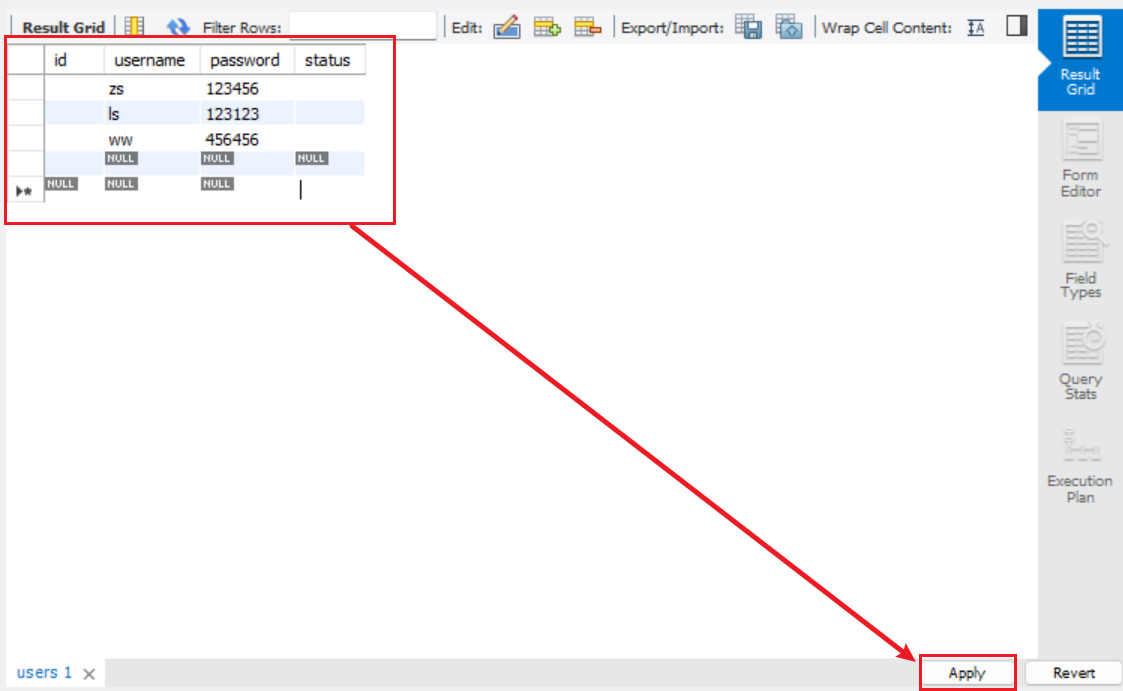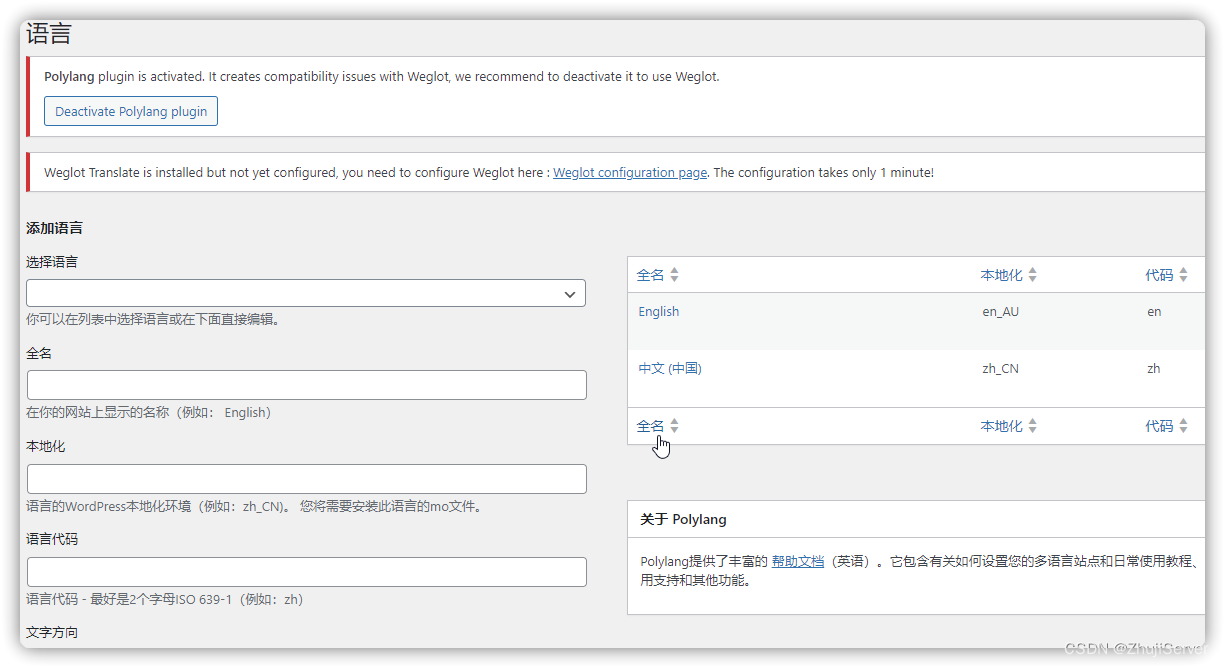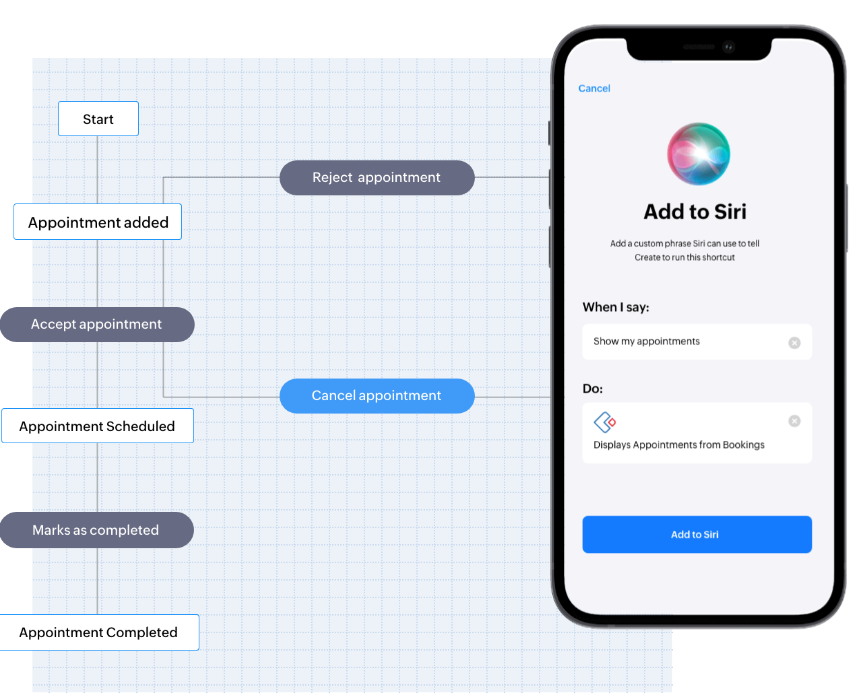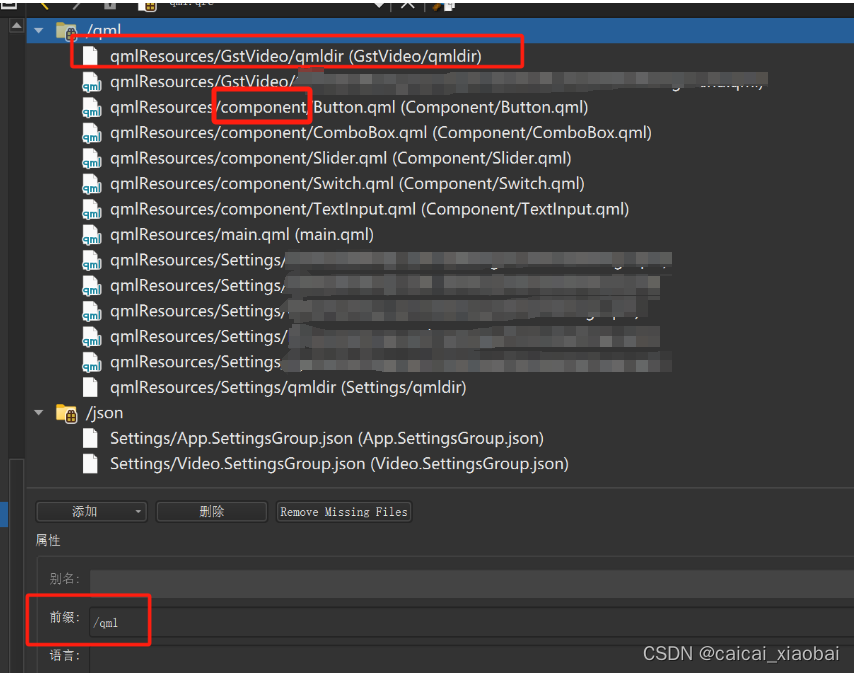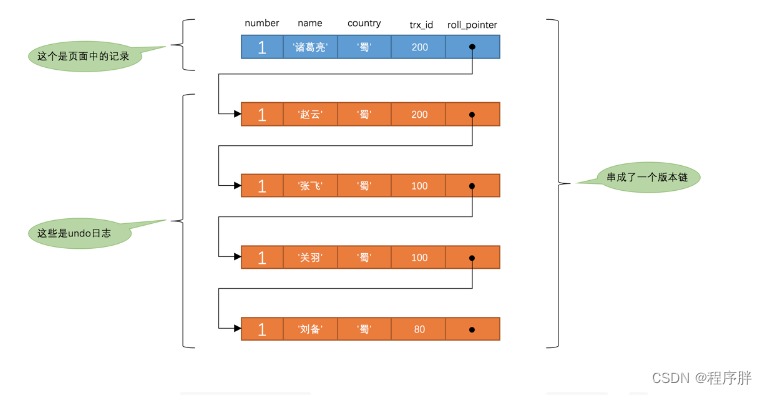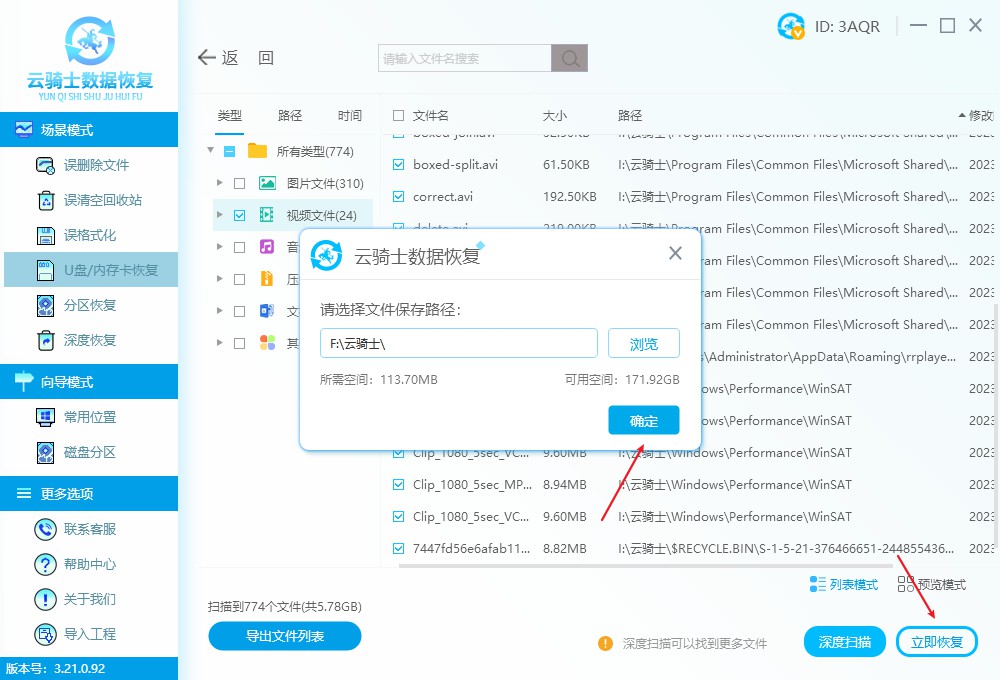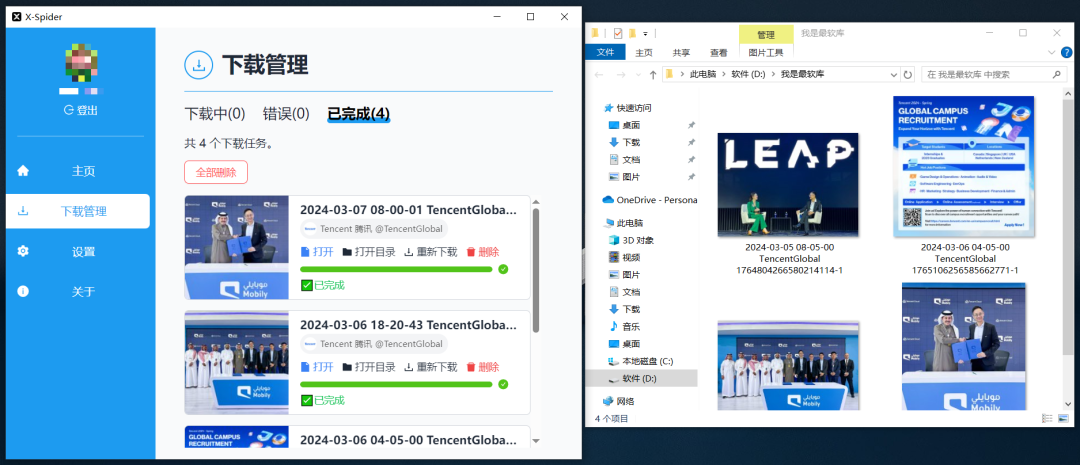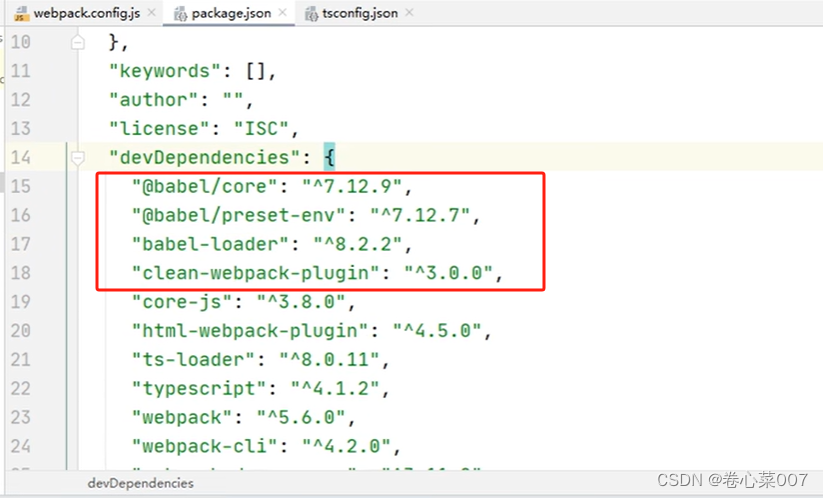环境:
Linly-Talker
问题描述:
Linly-Talker智能数字人实时对话系统如何部署体验
Linly-Talker 是一个智能 AI 系统,它将大型语言模型 (LLMs) 与视觉模型相结合,创造出一种新颖的人机交互方式。它集成了各种技术,如Whisper,Linly,Microsoft语音服务和SadTalker说话头生成系统。该系统部署在 Gradio 上,允许用户通过提供图像作为提示与 AI 助手交谈。用户可以进行自由形式的对话或根据自己的喜好生成内容。
解决方案:
拉取Linly-Talker项目
1.在e盘新建work文件夹
2.进入文件夹cd /mnt/e/work
git clone https://github.com/Kedreamix/Linly-Talker.git

3.设置虚拟环境
在Linly-Talker目录下安装venv包,请先安装:
sudo apt install python3-venv
4.创建新的虚拟环境:
python3 -m venv linlyenv
将linlyenv替换为您想要为虚拟环境的名称
5.激活虚拟环境:
source linlyenv/bin/activate
root@1848:/mnt/e/work/Linly-Talker# source linlyenv/bin/activate
(linlyenv) root@261848:/mnt/e/work/Linly-Talker#
安装依赖
配置pip使用清华的镜像源
pip config set global.index-url https://pypi.tuna.tsinghua.edu.cn/simple
1.pytorch安装
pip install torch==1.12.1+cu113 torchvision==0.13.1+cu113 torchaudio==0.12.1 --extra-index-url https://download.pytorch.org/whl/cu113
2.ubuntu安装ffmpeg
sudo apt install ffmpeg
3.安装requirements_app里面依赖
pip install -r requirements_app.txt
如果要使用语音克隆等模型,可能需要更高版本的 PyTorch。但是,功能将更加多样化。您可能需要使用 CUDA 11.8 作为驱动程序版本,您可以选择该版本。
conda create -n linly python=3.10
conda activate linly
pip install torch==2.1.0 torchvision==0.16.0 torchaudio==2.1.0 --index-url https://download.pytorch.org/whl/cu118
conda install -q ffmpeg # ffmpeg==4.2.2
pip install -r requirements_app.txt
nltk_data放在
root@ST-202207261848:/mnt/e/work/Linly-Talker# cd /usr/share
root@ST-202207261848:/usr/share# mv /mnt/e/work/Linly-Talker/linlyenv/nltk_data .
root@ST-202207261848:/usr/share# ls
Install dependencies for voice cloning
pip install -r VITS/requirements_gptsovits.txt
报错安装cmake
apt-get install cmake
为了大家的部署使用方便,更新了一个 configs.py 文件,可以对其进行一些超参数修改即可
# 设备运行端口 (Device running port)
port = 7870
# api运行端口及IP (API running port and IP)
ip = '127.0.0.1'
api_port = 7871
# Linly模型路径 (Linly model path)
mode = 'api' # api 需要先运行Linly-api-fast.py
mode = 'offline'
model_path = 'Linly-AI/Chinese-LLaMA-2-7B-hf'
# ssl证书 (SSL certificate) 麦克风对话需要此参数
ssl_certfile = "/path/to/Linly-Talker/https_cert/cert.pem"
ssl_keyfile = "/path/to/Linly-Talker/https_cert/key.pem"
下载权重一些文件,放入对应目录
### 1.2 权重下载
SadTalker的代码可以从 [Baidu (百度云盘)](https://pan.baidu.com/s/1eF13O-8wyw4B3MtesctQyg?pwd=linl) (Password: `linl`) 下载,也可以直接运行shell文件`bash scripts/sadtalker_download_models.sh `运行自动下载(比较适用于Linux)。
如果百度网盘下载,记住是放在 checkpoints 文件夹下,百度网盘下载的默认命名为 sadtalker,实际应该重命名为 checkpoints
Wav2Lip的代码模型也可以从One Drive下载,可以只下载第一个或者第二个:
| Model | Description | Link to the model |
| ---------------------------- | ----------------------------------------------------- | ------------------------------------------------------------ |
| Wav2Lip | Highly accurate lip-sync | [Link](https://iiitaphyd-my.sharepoint.com/:u:/g/personal/radrabha_m_research_iiit_ac_in/Eb3LEzbfuKlJiR600lQWRxgBIY27JZg80f7V9jtMfbNDaQ?e=TBFBVW) |
| Wav2Lip + GAN | Slightly inferior lip-sync, but better visual quality | [Link](https://iiitaphyd-my.sharepoint.com/:u:/g/personal/radrabha_m_research_iiit_ac_in/EdjI7bZlgApMqsVoEUUXpLsBxqXbn5z8VTmoxp55YNDcIA?e=n9ljGW) |
| Expert Discriminator | Weights of the expert discriminator | [Link](https://iiitaphyd-my.sharepoint.com/:u:/g/personal/radrabha_m_research_iiit_ac_in/EQRvmiZg-HRAjvI6zqN9eTEBP74KefynCwPWVmF57l-AYA?e=ZRPHKP) |
| Visual Quality Discriminator | Weights of the visual disc trained in a GAN setup | [Link](https://iiitaphyd-my.sharepoint.com/:u:/g/personal/radrabha_m_research_iiit_ac_in/EQVqH88dTm1HjlK11eNba5gBbn15WMS0B0EZbDBttqrqkg?e=ic0ljo) |
GPT-SoVITS的代码模型可以从以下链接下载,具体可看[https://github.com/RVC-Boss/GPT-SoVITS/blob/main/docs/cn/README.md#预训练模型](https://github.com/RVC-Boss/GPT-SoVITS/blob/main/docs/cn/README.md#预训练模型)
从 [GPT-SoVITS Models](https://huggingface.co/lj1995/GPT-SoVITS) 下载预训练模型,并将它们放置在 `GPT_SoVITS\pretrained_models` 中。
中国地区用户可以进入以下链接并点击“下载副本”下载以上两个模型:
- [GPT-SoVITS Models](https://www.icloud.com.cn/iclouddrive/056y_Xog_HXpALuVUjscIwTtg#GPT-SoVITS_Models)
- [UVR5 Weights](https://www.icloud.com.cn/iclouddrive/0bekRKDiJXboFhbfm3lM2fVbA#UVR5_Weights)
pip install -U openai-whisper
FunASR
阿里的 FunASR 的语音识别效果也是相当不错,而且时间也是比 whisper 更快的,更能达到实时的效果,所以也将 FunASR 添加进去了,在 ASR 文件夹下的 FunASR 文件里可以进行体验,需要注意的是,在第一次运行的时候,需要安装以下库,参考 https://github.com/alibaba-damo-academy/FunASR
pip install funasr
pip install modelscope
pip install -U rotary_embedding_torch
LLM - Conversation
Linly-AI
Linly 来自深圳大学数据工程国家重点实验室,参考 https://github.com/CVI-SZU/Linly
下载 Linly 模型:https://huggingface.co/Linly-AI/Chinese-LLaMA-2-7B-hf
可以使用 git 下载
apt-get install git-lfs
git lfs install
git clone https://huggingface.co/Linly-AI/Chinese-LLaMA-2-7B-hf
出错
(linlyenv) root@261848:/mnt/e/work/Linly-Talker# git lfs install
Error: failed to call git rev-parse --git-dir: exit status 128 : fatal: detected dubious ownership in repository at '/mnt/e/work/Linly-Talker'
To add an exception for this directory, call:
git config --global --add safe.directory /mnt/e/work/Linly-Talker
Git LFS initialized.
(linlyenv) root@02207261848:/mnt/e/work/Linly-Talker# git config --global --add safe.directory /mnt/e/work/Linly-Talker
(linlyenv) root@261848:/mnt/e/work/Linly-Talker# git lfs install
Updated git hooks.
Git LFS initialized.
或者使用 huggingface 的下载工具 huggingface-cli
pip install -U huggingface_hub
# 设置镜像加速
# Linux
export HF_ENDPOINT="https://hf-mirror.com"
# windows powershell
$env:HF_ENDPOINT="https://hf-mirror.com"
huggingface-cli download --resume-download Linly-AI/Chinese-LLaMA-2-7B-hf --local-dir Linly-AI/Chinese-LLaMA-2-7B-hf
或使用 API:
# 命令行
curl -X POST -H "Content-Type: application/json" -d '{"question": "北京有什么好玩的地方?"}' http://url:port
# Python
import requests
url = "http://url:port"
headers = {
"Content-Type": "application/json"
}
data = {
"question": "北京有什么好玩的地方?"
}
response = requests.post(url, headers=headers, json=data)
# response_text = response.content.decode("utf-8")
answer, tag = response.json()
# print(answer)
if tag == 'success':
response_text = answer[0]
else:
print("fail")
print(response_text)
API 部署推荐 FastAPI,现在更新了 FastAPI 的 API 使用版本,FastAPI 是一个高性能、易用且现代的 Python Web 框架,它通过使用最新的 Python 特性和异步编程,提供了快速开发 Web API 的能力。 该框架不仅易于学习和使用,还具有自动生成文档、数据验证等强大功能。 无论是构建小型项目还是大型应用程序,FastAPI 都是一个强大而有效的工具。
首先安装部署 API 所使用的库
pip install fastapi==0.104.1
pip install uvicorn==0.24.0.post1
其他使用方法大致相同,主要是不同代码实现方式,会更加简单边界,并且处理并发也会更好
from fastapi import FastAPI, Request
from transformers import AutoTokenizer, AutoModelForCausalLM, GenerationConfig
import uvicorn
import json
import datetime
import torch
from configs import model_path, api_port
# 设置设备参数
DEVICE = "cuda" # 使用CUDA
DEVICE_ID = "0" # CUDA设备ID,如果未设置则为空
CUDA_DEVICE = f"{DEVICE}:{DEVICE_ID}" if DEVICE_ID else DEVICE # 组合CUDA设备信息
# 清理GPU内存函数
def torch_gc():
if torch.cuda.is_available(): # 检查是否可用CUDA
with torch.cuda.device(CUDA_DEVICE): # 指定CUDA设备
torch.cuda.empty_cache() # 清空CUDA缓存
torch.cuda.ipc_collect() # 收集CUDA内存碎片
# 创建FastAPI应用
app = FastAPI()
# 处理POST请求的端点
@app.post("/")
async def create_item(request: Request):
global model, tokenizer # 声明全局变量以便在函数内部使用模型和分词器
json_post_raw = await request.json() # 获取POST请求的JSON数据
json_post = json.dumps(json_post_raw) # 将JSON数据转换为字符串
json_post_list = json.loads(json_post) # 将字符串转换为Python对象
prompt = json_post_list.get('prompt') # 获取请求中的提示
history = json_post_list.get('history') # 获取请求中的历史记录
max_length = json_post_list.get('max_length') # 获取请求中的最大长度
top_p = json_post_list.get('top_p') # 获取请求中的top_p参数
temperature = json_post_list.get('temperature') # 获取请求中的温度参数
# 调用模型进行对话生成
prompt = f"请用少于25个字回答以下问题 ### Instruction:{prompt} ### Response:"
inputs = tokenizer(prompt, return_tensors="pt").to("cuda:0")
generate_ids = model.generate(inputs.input_ids,
max_new_tokens=max_length if max_length else 2048,
do_sample=True,
top_k=20,
top_p=top_p,
temperature=temperature if temperature else 0.84,
repetition_penalty=1.15, eos_token_id=2, bos_token_id=1,pad_token_id=0)
response = tokenizer.batch_decode(generate_ids, skip_special_tokens=True, clean_up_tokenization_spaces=False)[0]
response = response.split("### Response:")[-1]
now = datetime.datetime.now() # 获取当前时间
time = now.strftime("%Y-%m-%d %H:%M:%S") # 格式化时间为字符串
# 构建响应JSON
answer = {
"response": response,
# "history": history,
"status": 200,
"time": time
}
# 构建日志信息
log = "[" + time + "] " + '", prompt:"' + prompt + '", response:"' + repr(response) + '"'
print(log) # 打印日志
torch_gc() # 执行GPU内存清理
return answer # 返回响应
# 主函数入口
if __name__ == '__main__':
# 加载预训练的分词器和模型
model = AutoModelForCausalLM.from_pretrained(model_path, device_map="cuda:0",
torch_dtype=torch.bfloat16, trust_remote_code=True)
tokenizer = AutoTokenizer.from_pretrained(model_path, use_fast=False, trust_remote_code=True)
model.eval() # 设置模型为评估模式
# 启动FastAPI应用
uvicorn.run(app, host='0.0.0.0', port=api_port, workers=1) # 在指定端口和主机上启动应用
默认部署在 7871 端口,通过 POST 方法进行调用,可以使用 curl 调用,如下所示:
curl -X POST "http://127.0.0.1:7871" \
-H 'Content-Type: application/json' \
-d '{"prompt": "如何应对压力"}'
也可以使用 python 中的 requests 库进行调用,如下所示:
import requests
import json
def get_completion(prompt):
headers = {'Content-Type': 'application/json'}
data = {"prompt": prompt}
response = requests.post(url='http://127.0.0.1:7871', headers=headers, data=json.dumps(data))
return response.json()['response']
if __name__ == '__main__':
print(get_completion('你好如何应对压力'))
得到的返回值如下所示:
{
"response":"寻求支持和放松,并采取积极的措施解决问题。",
"status":200,
"time":"2024-01-12 01:43:37"
}
Qwen(前面已下忽略)
来自阿里云的 Qwen,查看 https://github.com/QwenLM/Qwen
下载 Qwen 模型: https://huggingface.co/Qwen/Qwen-1_8B-Chat
可以使用 git 下载
git lfs install
git clone https://huggingface.co/Qwen/Qwen-1_8B-Chat
或者使用 huggingface 的下载工具 huggingface-cli
pip install -U huggingface_hub
# 设置镜像加速
# Linux
export HF_ENDPOINT="https://hf-mirror.com"
# windows powershell
$env:HF_ENDPOINT="https://hf-mirror.com"
huggingface-cli download --resume-download Qwen/Qwen-1_8B-Chat --local-dir Qwen/Qwen-1_8B-Chat
Gemini-Pro
来自 Google 的 Gemini-Pro,了解更多请访问 https://deepmind.google/technologies/gemini/
请求 API 密钥: https://makersuite.google.com/
LLM 模型选择
在 app.py 文件中,轻松选择您需要的模型。
# 取消注释并设置您选择的模型:
# llm = Gemini(model_path='gemini-pro', api_key=None, proxy_url=None) # 不要忘记加入您自己的 Google API 密钥
# llm = Qwen(mode='offline', model_path="Qwen/Qwen-1_8B-Chat")
# 自动下载
# llm = Linly(mode='offline', model_path="Linly-AI/Chinese-LLaMA-2-7B-hf")
# 手动下载到指定路径
llm = Linly(mode='offline', model_path="Linly-AI/Chinese-LLaMA-2-7B-hf")
pip3 install gradio
Gradio
Gradio 是一个 Python 库,提供了一种简单的方式将机器学习模型作为交互式 Web 应用程序来部署。
对 Linly-Talker 而言,使用 Gradio 有两个主要目的:
可视化与演示:Gradio 为模型提供一个简单的 Web GUI, 上传图片和文本后可以直观地看到结果。这是展示系统能力的有效方式。
用户交互:Gradio 的 GUI 可以作为前端,允许用户与 Linly-Talker 进行交互对话。用户可以上传自己的图片并输入问题,实时获取回答。这提供了更自然的语音交互方式。
具体来说,我们在 app.py 中创建了一个 Gradio 的 Interface, 接收图片和文本输入,调用函数生成回应视频,在 GUI 中显示出来。这样就实现了浏览器交互而不需要编写复杂的前端。
总之,Gradio 为 Linly-Talker 提供了可视化和用户交互的接口,是展示系统功能和让最终用户使用系统的有效途径。
启动
现在的启动一共有几种模式,可以选择特定的场景进行设置
第一种只有固定了人物问答,设置好了人物,省去了预处理时间
python app.py
第二种是可以任意上传图片进行对话
python app_img.py
第三种是在第一种的基础上加入了大语言模型,加入了多轮的 GPT 对话
python app_multi.py
报错
(linlyenv) root@ST-202207261848:/mnt/e/work/Linly-Talker# python app_multi.py
Command 'python' not found, did you mean:
command 'python3' from deb python3
command 'python' from deb python-is-python3
ln -s /usr/bin/python3 /usr/bin/python
如报错多
在安装一遍、
pip install -r requirements_app.txt
pip3 install zhconv
pip3 install transformers
pip install -U google-generativeai
apt install ffmpeg
pip3 install ffmpeg-python opencv-python-headless
出现下面报错
While copying the parameter named "decoder.blocks.5.mlp.0.weight", whose dimensions in the model are torch.Size([2048, 512]) and whose dimensions in the checkpoint are torch.Size([2048, 512]), an exception occurred : ('CUDA error: no kernel image is available for execution on the device',).
While copying the parameter named "decoder.blocks.5.mlp.2.weight", whose dimensions in the model are torch.Size([512, 2048]) and whose dimensions in the checkpoint are torch.Size([512, 2048]), an exception occurred : ('CUDA error: no kernel image is available for execution on the device',).
在安装一次
pip install torch==1.12.1+cu113 torchvision==0.13.1+cu113 torchaudio==0.12.1 --extra-index-url https://download.pytorch.org/whl/cu113
sadtalk报错
https://github.com/xinntao/facexlib/releases

最后运行成功
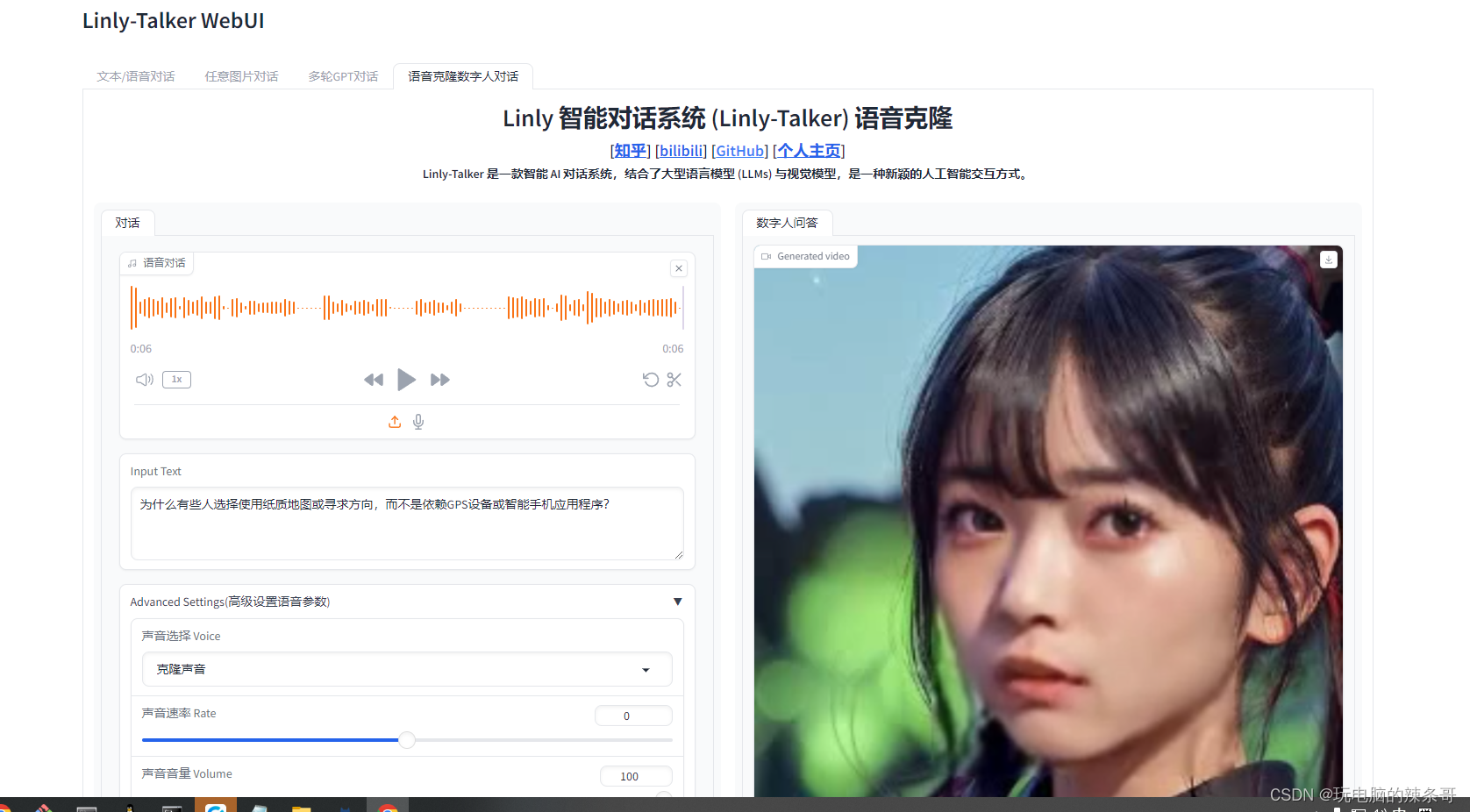
文件夹结构如下
权重部分可以从这下载:Baidu (百度云盘) (Password: linl)
Linly-Talker/
├── app.py
├── scripts
│ └── download_models.sh
├── src
│ ├── audio2exp_models
│ ├── audio2pose_models
│ ├── config
│ ├── cost_time.py
│ ├── face3d
│ ├── facerender
│ ├── generate_batch.py
│ ├── generate_facerender_batch.py
│ ├── Record.py
│ ├── test_audio2coeff.py
│ └── utils
├── inputs
│ ├── example.png
│ └── first_frame_dir
│ ├── example_landmarks.txt
│ ├── example.mat
│ └── example.png
├── examples
│ └── source_image
│ ├── art_0.png
│ ├── ......
│ └── sad.png
├── TFG
│ ├── __init__.py
│ ├── Wav2Lip.py
│ └── SadTalker.py
└── TTS
│ ├── __init__.py
│ ├── EdgeTTS.py
│ └── TTS_app.py
├── ASR
│ ├── __init__.py
│ ├── FunASR.py
│ └── Whisper.py
├── LLM
│ ├── __init__.py
│ ├── Gemini.py
│ ├── Linly.py
│ └── Qwen.py
....... // 以下是需要下载的权重路径(可选)
├── checkpoints // SadTalker 权重路径
│ ├── mapping_00109-model.pth.tar
│ ├── mapping_00229-model.pth.tar
│ ├── SadTalker_V0.0.2_256.safetensors
│ └── SadTalker_V0.0.2_512.safetensors
│ ├── lipsync_expert.pth
│ ├── visual_quality_disc.pth
│ ├── wav2lip_gan.pth
│ └── wav2lip.pth // Wav2Lip 权重路径
├── gfpgan // GFPGAN 权重路径
│ └── weights
│ ├── alignment_WFLW_4HG.pth
│ └── detection_Resnet50_Final.pth
├── Linly-AI // Linly 权重路径
│ └── Chinese-LLaMA-2-7B-hf
│ ├── config.json
│ ├── generation_config.json
│ ├── pytorch_model-00001-of-00002.bin
│ ├── pytorch_model-00002-of-00002.bin
│ ├── pytorch_model.bin.index.json
│ ├── README.md
│ ├── special_tokens_map.json
│ ├── tokenizer_config.json
│ └── tokenizer.model
├── Qwen // Qwen 权重路径
│ └── Qwen-1_8B-Chat
│ ├── cache_autogptq_cuda_256.cpp
│ ├── cache_autogptq_cuda_kernel_256.cu
│ ├── config.json
│ ├── configuration_qwen.py
│ ├── cpp_kernels.py
│ ├── examples
│ │ └── react_prompt.md
│ ├── generation_config.json
│ ├── LICENSE
│ ├── model-00001-of-00002.safetensors
│ ├── model-00002-of-00002.safetensors
│ ├── modeling_qwen.py
│ ├── model.safetensors.index.json
│ ├── NOTICE
│ ├── qwen_generation_utils.py
│ ├── qwen.tiktoken
│ ├── README.md
│ ├── tokenization_qwen.py
│ └── tokenizer_config.json`


